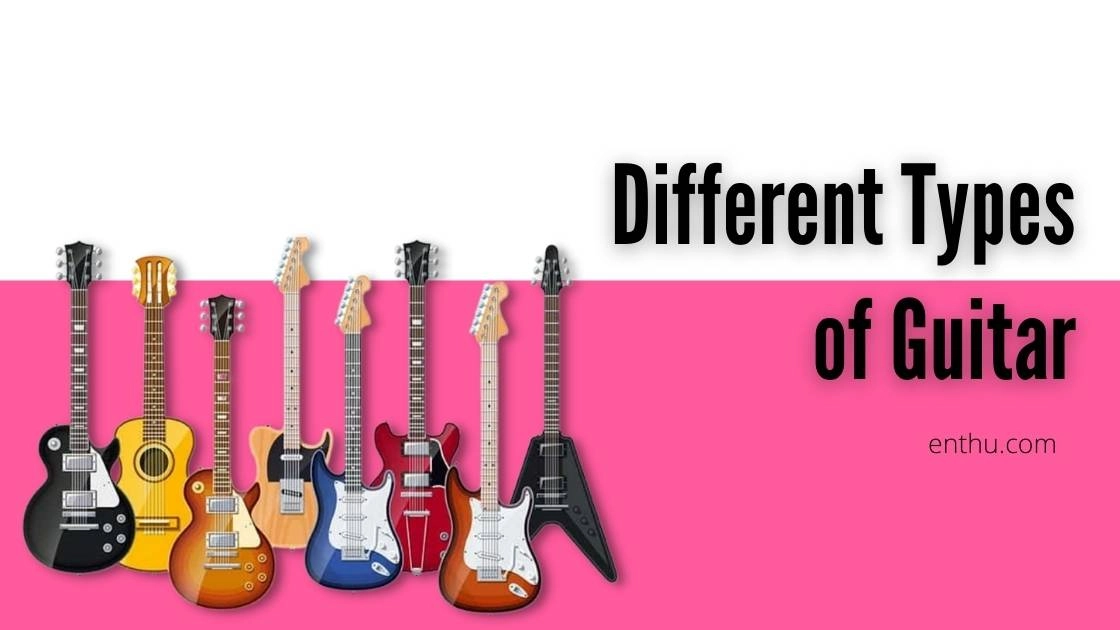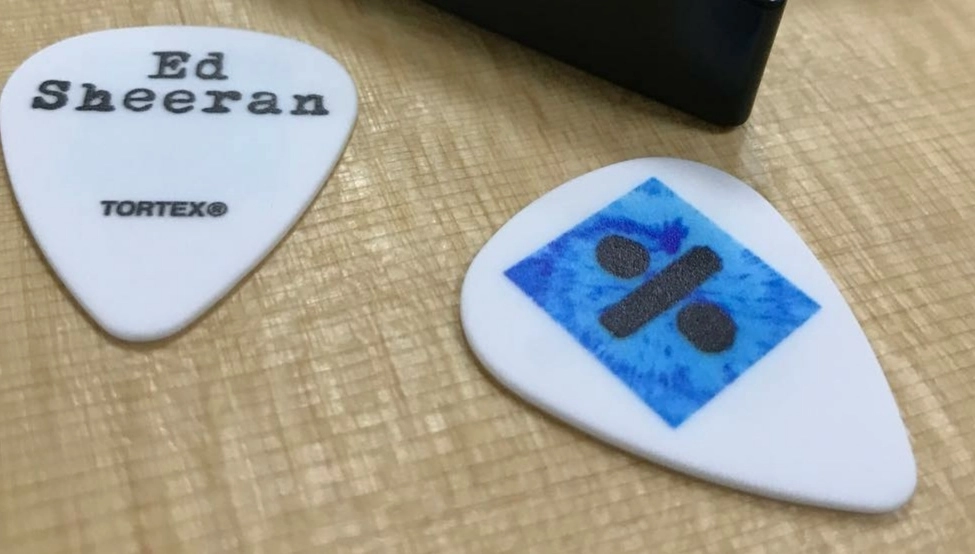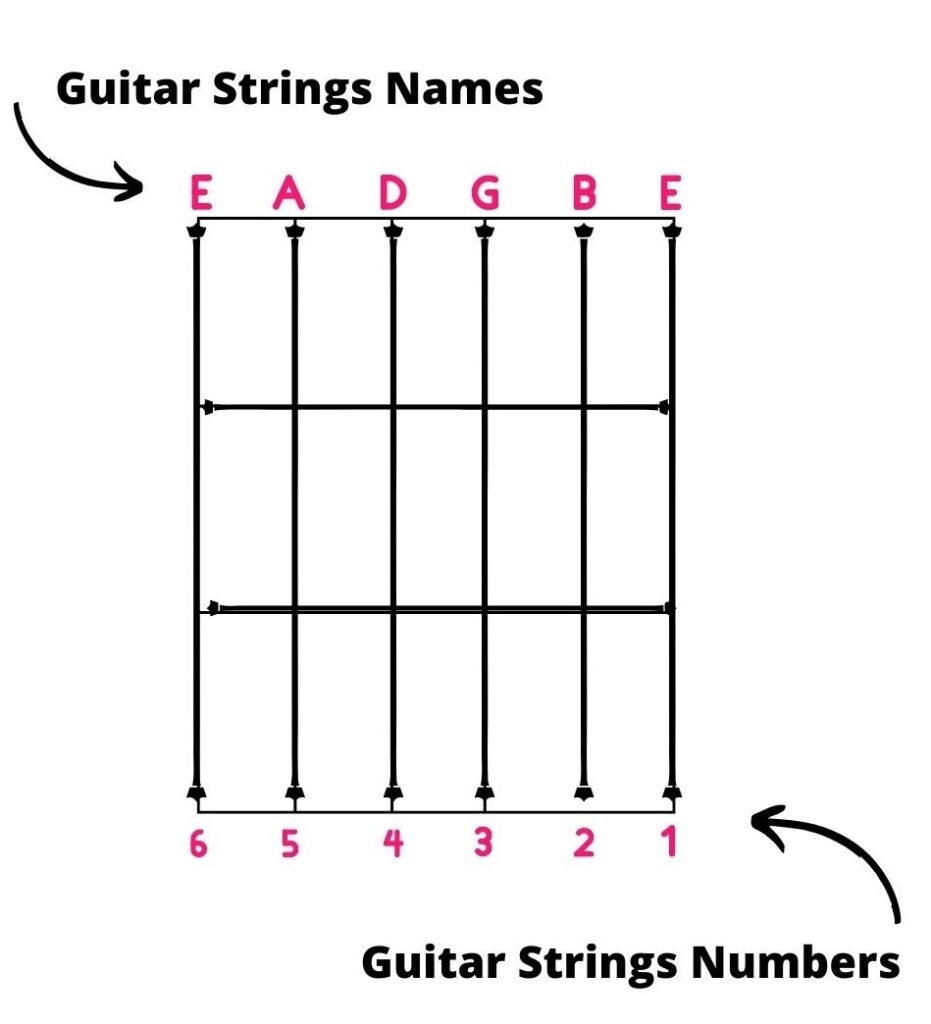"I wish I could also play the guitar," a friend said to me when he saw me strumming. He had no idea how to play the guitar, but the curiosity I saw in his eyes was at its peak. He just could not wait to ace the chords, so he ended up buying an elegant guitar.
I told my friend to get familiar with something, you must know it thoroughly. That is exactly what I told my friend, "Learning all the parts of the guitar is the first step if you want to master it." It is crucial to know your instrument.
You might get bored going through every part, but the basics are the root. Once you know it inside out, nothing can stop you from playing your favorite song! Let me introduce you to all the parts of a guitar.
- Parts of Guitar
- Know Your Instrument
- 1. Head The upper part of the guitar
- 2. Tuning Peg The Tuning Peg
- 3. Nut Before we Move towards
- 4. Neck The wooden neck of the guitar
- 5. Fret Markers
- 6. Body Do you
- 7. Pick Pick or Plectrum
- 8. Pick Guard
- 9. Bridge and Saddle
- 10. Bridge Pins Below
- The saddle, you will see six dots. These are the bridge pins that hold and secure the strings.
- 11. End Pin
- 12. Strings
- Guitar String Names and Numbers
- Conclusion
- FAQs

Parts of Guitar
Every guitar part plays a vital role when you hit a chord and strum the strings. It functions exactly like our body. Each piece is imperative for its unique quality. Moreover, different guitars have various parts. Apart from subordinate parts, three main elements are similar in every guitar.
1. Three Main Elements of a Guitar
Now, to make it easier for you to understand, let's consider the guitar as a human body. Like the human body, the guitar has three main components: Head, Neck, and Body.
As our upper body covers the internal organs, sub-parts of the guitar are covered under the three primary parts. Each element has a name, and it functions accordingly. Let's do a tour of the guitar and its features!
2. Different Parts of a Guitar
Though
Though different types of guitars exist, the fundamental elements are similar among all. But do you know that the guitar consists of around 20 parts? Well, don't fret. You don't have to memorize all the elements. We will focus on the guitar's essential parts.


As shown in the picture, each element has its identity. Let's discuss this in detail. Make sure you refer to the image while learning all the parts.
Check out EnthuZiastic Guitar Classes for a personalized Guitar learning experience.
Know Your Instrument
1. Head The upper part of the guitar
Is called the Head or Headstock. You will usually find the brand name of the guitar here. Besides that, bindings are also presented at the edge of head.

2. Tuning Peg The Tuning Peg
Is integral to the guitar presented on the sides, also known as Machine heads. There are 6 tuning pegs - 3 to the right and 3 to the left. With the tuner's help, these tuning keys are twisted in a certain way to set the intonation. The tuning is also known as Standard Tuning.
3. Nut Before we Move towards
The neck of the guitar, there is a tiny part between the Headstock and the neck where strings rest, called Nut. Nut plays an important role when you pluck a string.
Two main functions of Nut
It gives a direction to the strings to have a smooth connection from the bridge to the tuning pegs.
If you notice, there is a slight distance between the neck and the Fretboard. So, the Nut maintains that crucial gap. You will not be able to play the strings smoothly if the lines touch the surface.
4. Neck The wooden neck of the guitar
Is popularly known as the Fretboard. The guitar neck is where the strings rest. On the neck, you will find small boxes between two metal strips. These boxes are identified as Frets. A guitar has around 19 frets. You can create many melodies with the strings by changing frets.

5. Fret Markers
I would say fret markers are underrated. They must be considered an essential part of the guitar. Fret Markers are white dots on or at the guitar's sides. They are usually presented on the 3rd, 5th, 7th, 9th, 12th, 15th, 17th, and 19th fret.
So, the fret markers help you in locating the positions and do not let you get lost. The side markers help while performing as you won't have to bend and check your fret number. The markers show where you are traveling through the fingerboard.
6. Body Do you
Hear a vibration when you hit a string? Yes, this is where you experience the magic! You hear that sound because of the maple Sound Box. This small chamber in an acoustic guitar, also known as Sound-hole, works as an amplifier.
It intensifies the note you play, and hence you experience a reverberated sound. An electric guitar has a small body than an acoustic guitar. You have to connect it to the external amplifier, and then you hear a sound.
Some guitars have control settings on the side and a cable jack below the body, including a volume key, knob, and tuner.
7. Pick Pick or Plectrum
Is an external though integral part of the guitar. It is often triangular-shaped and made of plastic, nylon, or other material. It is used to pluck the strings. You will be able to produce a clean sound once you learn the right technique to hold the pick.
The individuality of notes can be easily classified with the help of a pick. An interesting fact, Ed Sheeran has played many acoustic guitars during his concerts. Interestingly, he uses custom-made picks for his music tours, matching the current one where his name or the album cover is embedded.

Picture Courtesy - Ed Sheeran's Official Instagram Account
8. Pick Guard
When you pluck the strings hard with Plectrum, it might create a scratch. Hence, the pickguard or scratch plate is placed on the guitar's body to protect it from abrasion.
9. Bridge and Saddle
Many people get confused about the Bridge and Saddle of the guitar. Both the terms are complementary. The bridge is presented on the bulky part of the guitar, that is, on the body. It supports the strings to rest.
Whereas, Saddles function just like the Nut. They are usually made of plastic and affixed to the bridge. They maintain spacing between the strings and the body by lifting the strings, so that they convey vibrations.
10. Bridge Pins Below
The saddle, you will see six dots. These are the bridge pins that hold and secure the strings.
11. End Pin
It's a pin at the end of the body and the top of the neck where you can attach the guitar strap. Some guitars have an additional hook on top of the body. It holds the guitar in place and makes the standing performances more comfortable.
12. Strings
Do you know why guitar sounds the best? Because of the Strings. Strings are the ones that bring appropriate tone and playability to the guitar. Choosing the best strings is a task as strings have their distinct tone and feelings.

Besides, these strings have different densities. The measurement changes with each string, and so does the thickness. The String Gauge helps to find the appropriate tone based on the thickness of the string.
The thickness has a lot of impact on the strings and playability. The thicker string has greater tension.
Guitar String Names and Numbers
As you know the importance of the strings, you should also know their identity and order.

Guitar Strings Guitar strings are arranged according to their thickness and tonal qualities. So there are usually six strings on a guitar that are set out from thin to thick.

It goes as E string, B string, G string, D string, A string, and E string. The first string is a High E string which is thin and delicate. The sixth E string is a Low E string having a thick density.
1. Guitar Strings Number
Every string has a number so that it can be easily recognized. The E string (High and Thin) is numbered as the first string. The B string is called the 2nd string. Every single string has an order accordingly. Let's make it easier for you to understand:
E string - First (High in pitch)
B string - Second
G string - Third
D string - Fourth
A string - Fifth
E string - Sixth (Low in pitch
NOTE: The First E string is a High E string, whereas the Sixth E string is the Low E string. Both strings are distinct from each other.
It is not that difficult to remember the strings in order. Routinely practice will never let you forget them.
As you have learned the different guitar parts, you must also know that the guitar is one of the most versatile stringed instruments. It has a long history of its origin in Spain, early in the 15th century. The guitar has a separate fan base among the youth; and is the most popular learning instrument.

2. Popular Songs on Guitar
The guitar is a versatile musical instrument used in various genres and musical styles such as Rock, Pop, Folk, Country, Blues, Jazz, classical, and whatnot!
Jimi Hendrix is famous as the greatest guitarist of all time. The way he aced the Electric guitar in "Castles Made Of Sand" will leave you amazed.
"Here Without You" is a fantastic song by an American Rock Band called 3 Doors Down. The way acoustic and electric guitars make an appearance blows your mind.
"Photograph" and "Perfect" by Ed Sheeran will make you fall even more for the emotions and melody the guitar conveys.
People have been learning guitar to ace the Pirates of the Caribbean Theme Song!


Conclusion
The Guitar is considered as the coolest instrument. As per the survey by Fender, many people in the US between the ages of 13-64, started investing time in themselves after the pandemic.
Interestingly, many of them started learning guitar and 72 million people have been successfully acing their guitar skills!
So good to know that you want to learn it too. But, make sure you stick to the basics before moving further with excitement. I know you are eager to learn and play your favorite musical pieces on the guitar.
But, you need to keep in mind that you can play any melody only if you understand all the parts and functions of the guitar. Happy playing!
FAQs
1. Do all guitars have similar parts?
Though different guitars exist, the three main parts are identical - the Headstock, neck, and body. Apart from that, each guitar type has unique elements. For instance, a vibrato arm is affixed on an electric guitar to create pitch variations, while that is not a part of an acoustic guitar.
2. What can happen if I tighten the machine heads too much?
The strings might break. It would be best if you twist the knobs with utmost care and patience. Tightening them too much can damage the strings and keys. And it's also possible that the strings might go out of tune.

3. What should I learn first on guitar?
You must first focus on grasping the guitar parts. Moving forward, enroll in a guitar class, where you get proper guidance and direction to adapt the skill. As a self-learner, you can start with scales, tabs, and chords accordingly.

![All the Parts of Guitar Explained [With Diagram]](https://enthu.com/blog/media/ZPh6ReASD2ezfDmB.jpg)
Comments